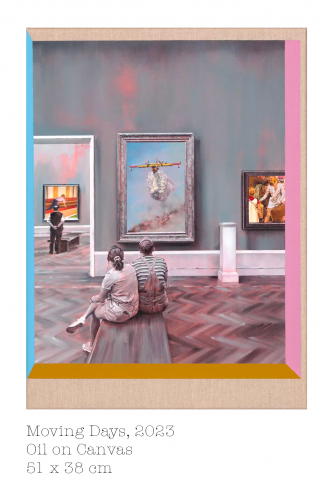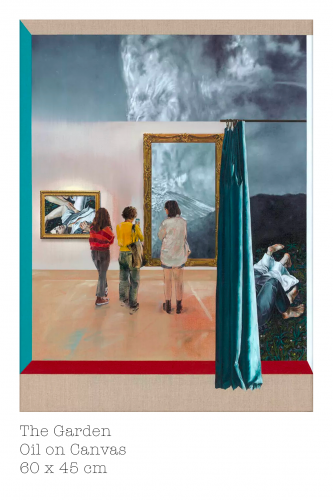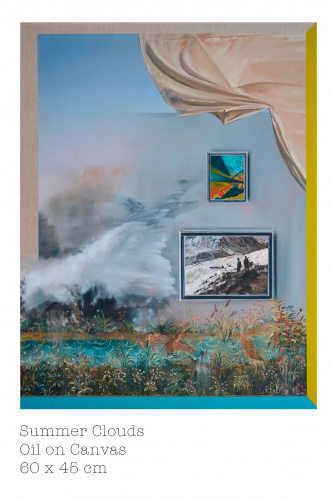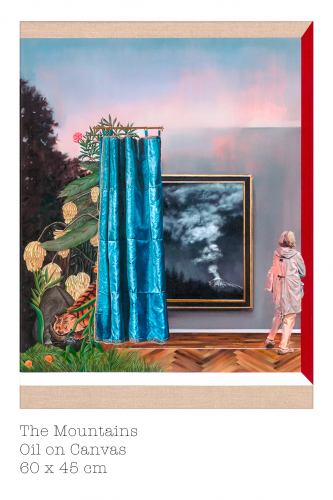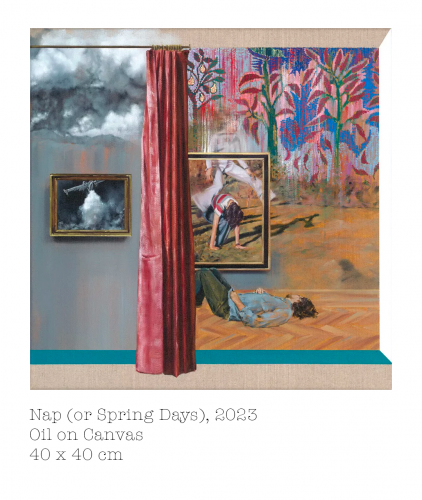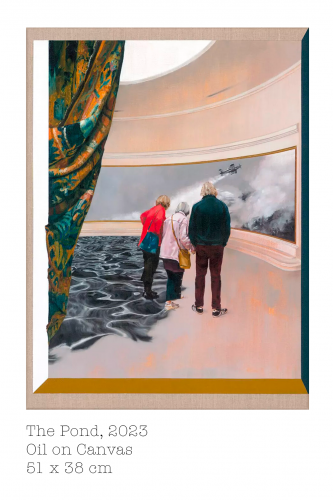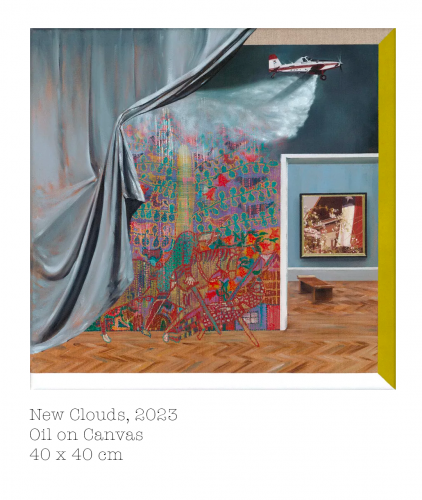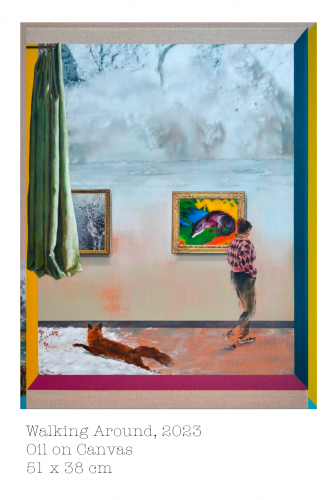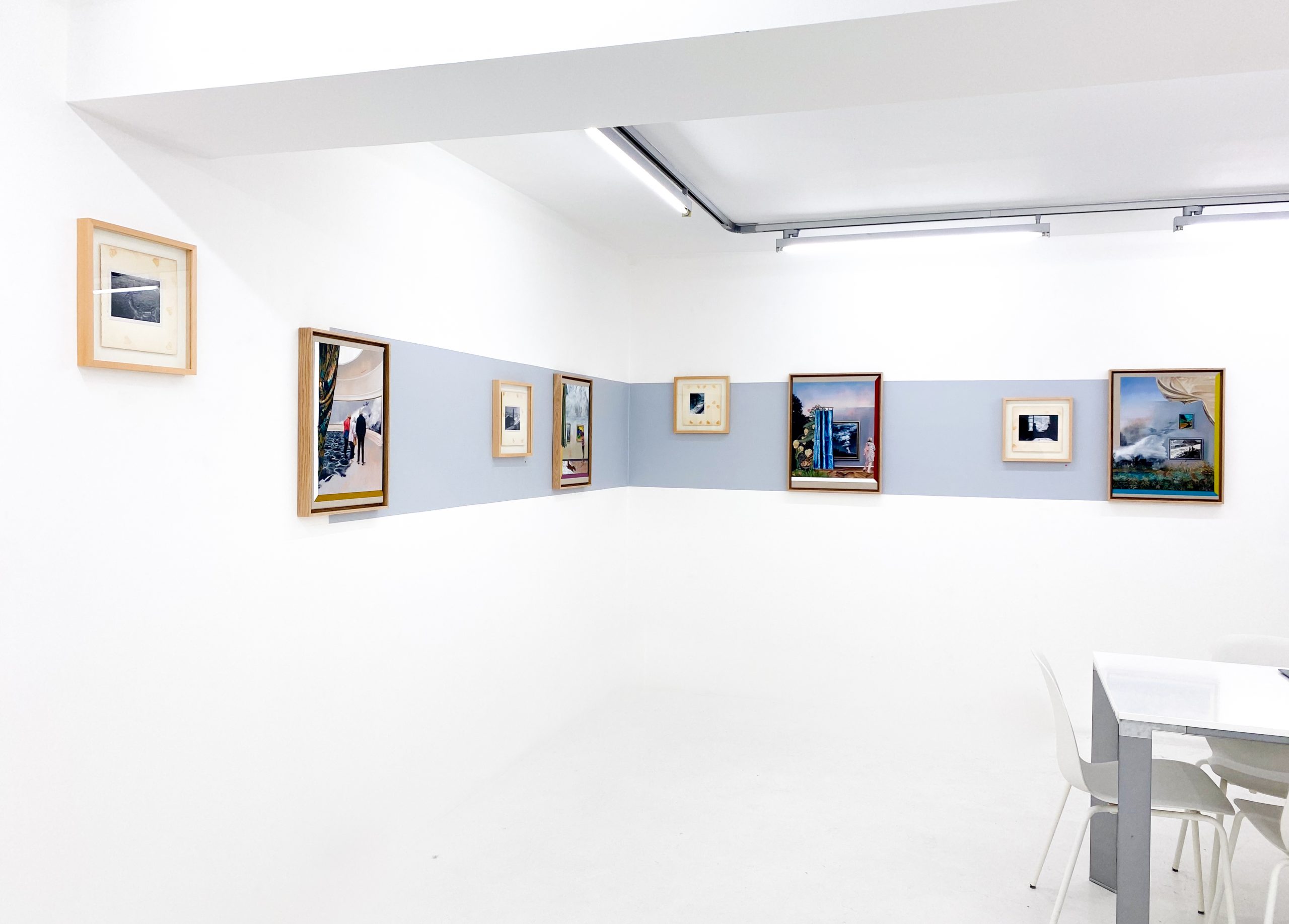
In 1981, art historian Jean Clair defined realism as a “scrupulous observation of the represented model by the artist, may it be a figure, a face or a still life, even if this study ends in a religious or allegorical composition”.
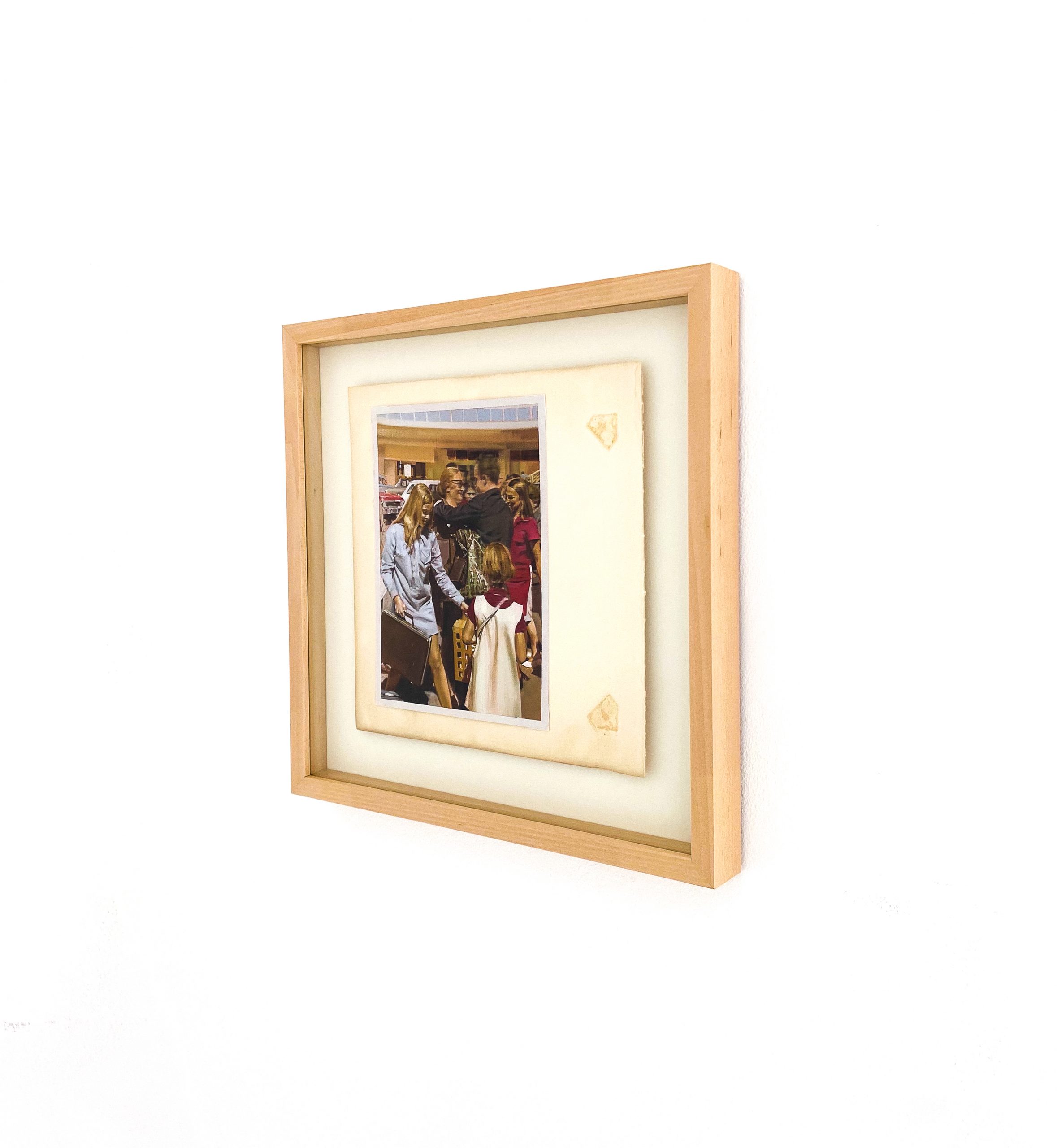
Chilean painter Andrea Breinbauer’s work, undeniably realist, is also strongly surrealist. Graduated in Fine Arts at the Pontificia Universidad Católica de Chile, then awarded by the DAAD to pursue Stage Design studies at the Weißensee Kunsthochschule Berlin, Andrea Breinbauer sweeps with a precise brush art history, while bringing together her own memories and photographic archives in order to transcribe a very personal imaginary.
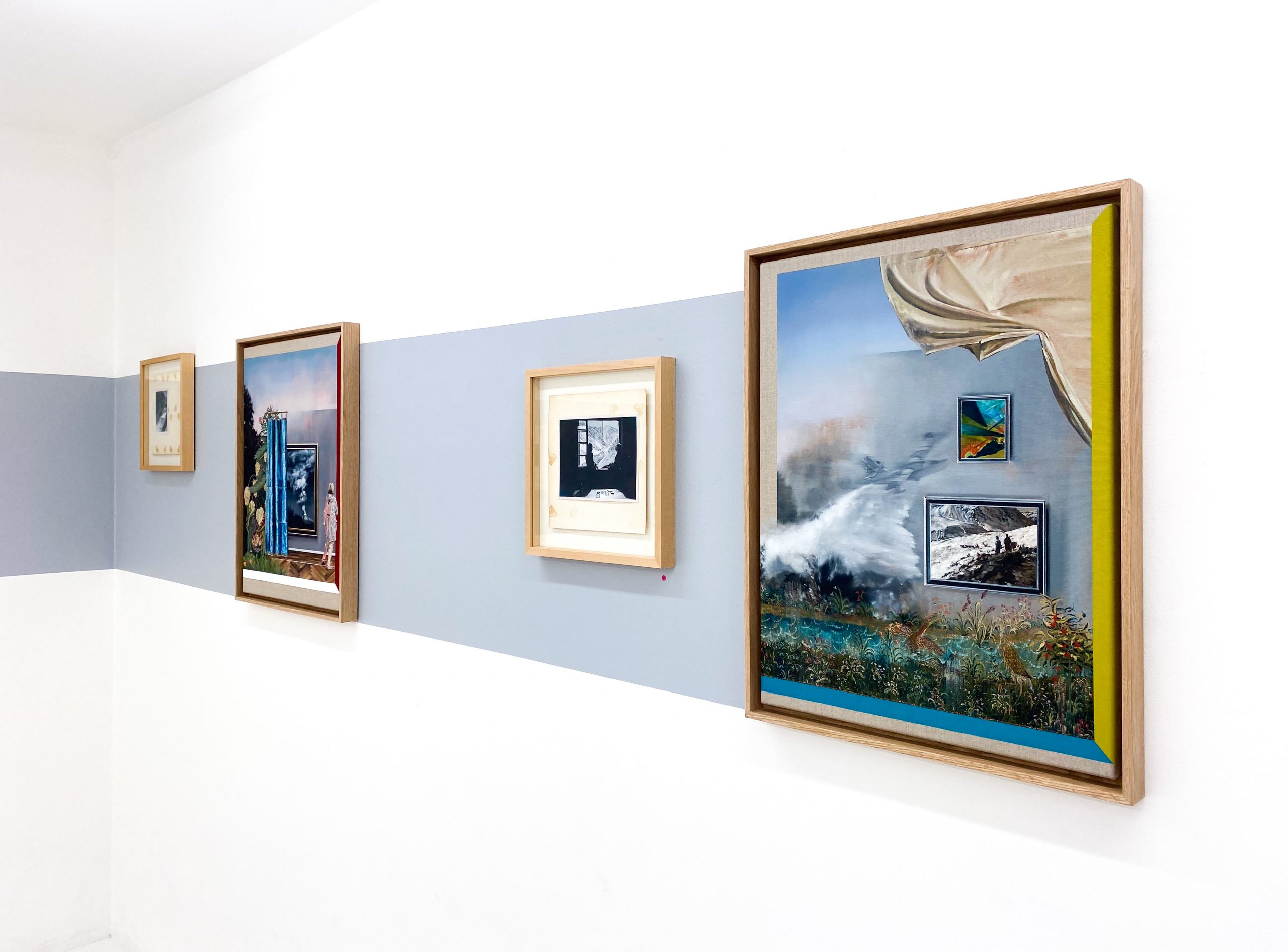
In New Clouds, the artist focused her research for the first time in entirely bidimensional supports, oil painting on canvas. Her mastery of this medium allows her to freely explore various sources and inspirations, that range from a melancholic past up to our sometimes blurry present.
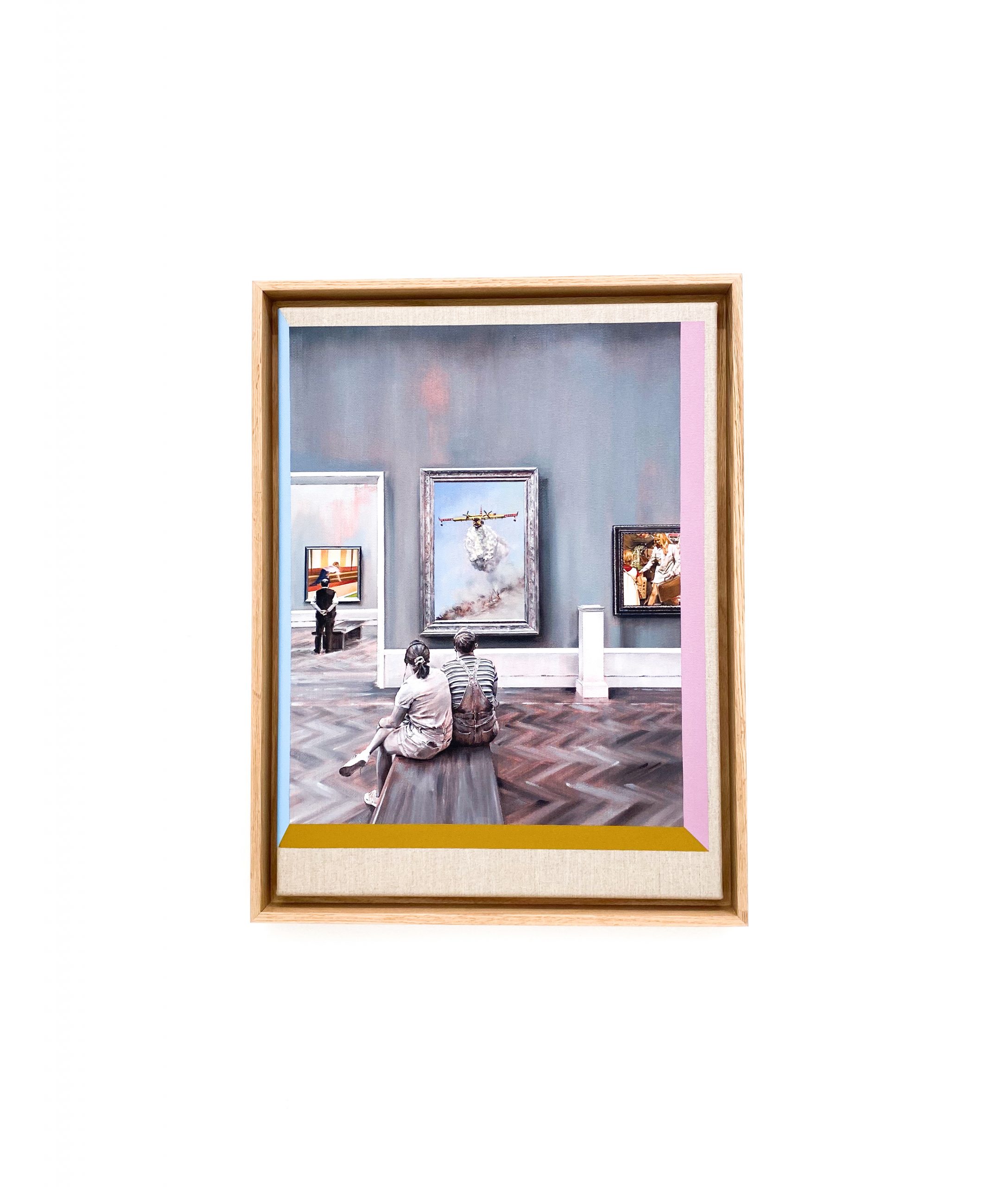
In her canvas production, the association of different images results in what seems to be a collage – almost recalling Max Ernst’s surrealist works – whose great naturalism creates an ambiguous feeling, between painting and photography. Andrea Breinbauer’s acute knowledge of art history offers her the possibility of bringing sources together, distant both in style and in time. We can thus see Valloton’s Verdun (1917, Musée de l’Armée, Paris) right next to the Unicorn Tapestries luxurious vegetation (XVth cent, Metropolitan Museum of Arts, New York). Further away, it is the Douanier Rousseau Tiger and Buffalo fight (1908, Museum of Cleveland) that stands close to Dutch painter Adriaen Van der Spelt satin curtain (1658, Chicago Art Institute). By using a process of juxtaposition, the Chilean painter displays a new sight of painting history and questions our vision as spectators towards contemporaneity.
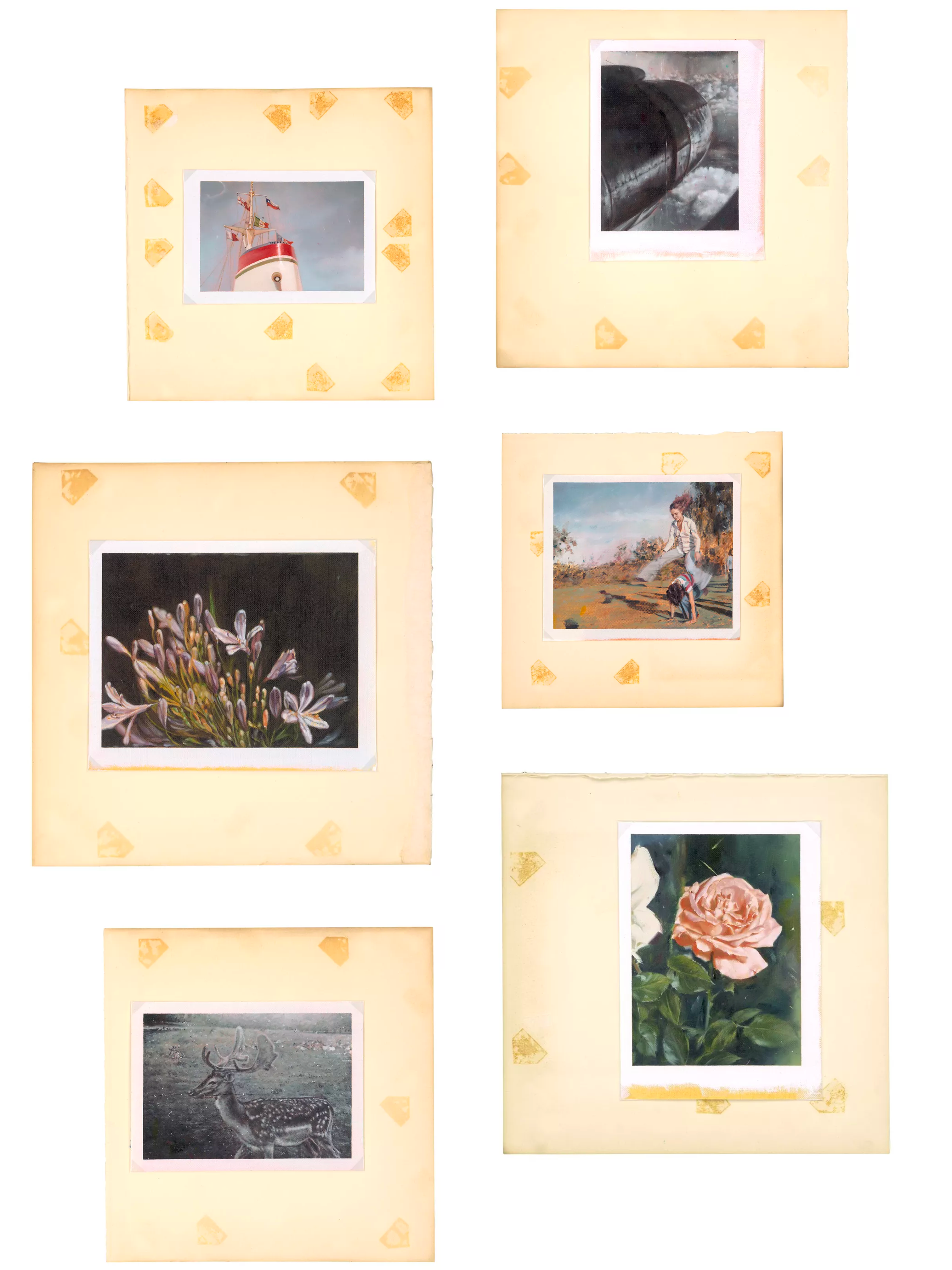
Human figures undoubtedly contrast with the strangeness and instability of their overflowed surroundings, created by wave-like grounds, eruptions and clouds escaping from their frame, while distances seem to approach and then retreat in interior spaces that blend with the exterior (or vice versa). The fictive character invites to a mise en abyme of the spectator’s gaze, who observes another spectator, immutable and eternal. But a spectator of what? Of the tireless race of time that painting would only observe? Of the path of History, marked by its artists? These open- ended questions invite us to reframe our acquired knowledge and our position in these convulsive times.
